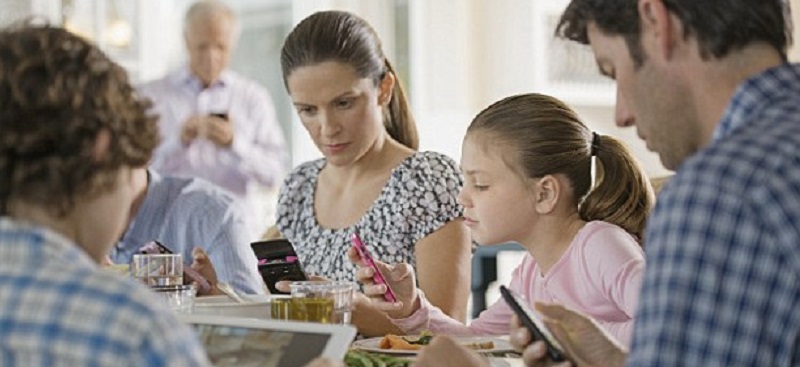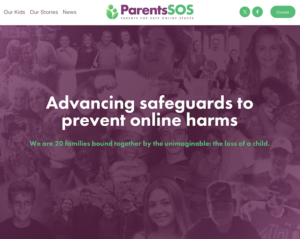It was about 20 years ago when I started identifying children who overused screens. I was working in schools as a pediatric occupational therapist at the inception of the adhd craze, and was curious enough to ask my adhd students “do you game”? It made sense to me that a body designed to move should not be sedentary, and a brain undergoing rapid development, should not merely be entertained. Overloading young visual and auditory systems with fast paced bright lights and loud noise caused further concern. As autism rates climbed (an attachment disorder), I pondered the outcome of early onset device-mediated social detachment. What has been most interesting of late has been observing the trajectory of social awareness regarding screen overuse. It’s standard fare these days to read about unplugging, detoxing, cutting down, or even eliminating the pervasive aspects of technology in our lives. What is rarely discussed is the underlying causal factors for screen overuse by families, and the origin of addictions in general. As we watch unbridled rates of teen suicide, addictions, and mental health disorders rise, it becomes imperative that we start to explore the family system underpinnings for such vast and pervasive poor mental health of our children and youth. This article intends to explore why families overuse screens, and why it is so hard to stop.
Historically, society has shown its propensity to ‘re-norm’ it’s values and rules to conform with present day trends, most notably the integration of technological devices into every aspect of family lives. What was a privilege only five years ago, cell phones are now considered by many to be a basic human right. We are now a society that has placed cell phones on the same level as food, clothing, and shelter. When I enter client’s home, I routinely see large screens in every room, toddlers glued to their tablets, and children brandishing the latest cell phone. As a play therapist I ask where are the toys, they must be in another room I am thinking, but they’re not. Even a basic deck of cards or board game is a non-entity in our family’s screen-obsessed world. As I can’t compete with screens, I ask the whole family to put them on top of the fridge, along with the device remotes, a process that can take up to an hour. What happens during this fragile time, is many failed attempts to engage in family conversation. I offer gentle observations such as “Dad, did you see your son trying to get your attention?” or “Mom, try to look at your child, they are tugging on your sleeve”.
Generally speaking, this family reconnection process follows a pattern which starts with the parents fighting, about anything really, and then moves toward either one or both parents picking back up their device, or working with me on family reconnection strategies. I use play and simple games to redirect everyone away from the reactive behaviors, toward interacting with each other such as hide and seek, tag, cuddling, reading books, and quite simply – finding comfort in each other. There is a palatable tension in this reconnection process, an existential anxiety, which is immediately extinguished by picking up the device. Asking families to stay in this place of unrest and uncertainty is close to impossible, so I turn to activities to help them through this unease onto more comfortable interactions. Parents will readily tell me that they pick up the device to relieve stress, boredom, or to escape, but when asked what they are escaping or are bored with, begin to see it is their own children, or their partners. The futility of using a virtual device to escape/avoid reality may be obvious to many, but is lost on today’s stressed and hurried parents. Clinical experience has repeatedly shown that this fear of intimacy, of human connection and relatedness, is the salient underlying causal factor for family tech addictions.
As my families who overuse screens rarely interact with each other, they require ongoing support and strategies, as well as encouragement and concrete suggestions. I recommend families start with carving out one hour per day no-tech, such as dinner prep/eat/clean-up, or when driving in cars. Dinner and cars are two sacred spaces where family interaction and communication can occur, if devices are prohibited. Families should have a few social games planned, such as going around the table and having each member share one good and one bad thing that happened to them that day, or car games such as rock-paper-scissors or mineral-animal-vegetable. Starting with a family meeting is suggested in order to discuss opinions and wishes of family members. In my experience as a family therapist, I have yet to meet a child who prefers a device to the attention of their parents. Generally speaking, if a child has screen overuse issues, so does the whole family, and tech rules and structure are sorely needed to help get the family back on track.
So whether families are over using screens as an escape, or to relieve boredom or stress, the real fear is of intimacy and being connected with each other. Some family members have stated they don’t feel as if they are important or looked up to by others, that they don’t have a place in the ‘family of things’. Deciding on chore which can be done as a whole family, such as yard work or house cleaning, can establish a team approach, helping members to feel essential and needed. In this day and age of individualism and isolation, we need to rediscover the significance and sustainability of the ‘family pack’ without which, our children will fail to survive.
This article was written by Cris Rowan, pediatric occupational therapist, biologist, international speaker and author of “Virtual Child”. Cris’s website is www.zonein.ca and she can be reached at crowan@zonein.ca.




